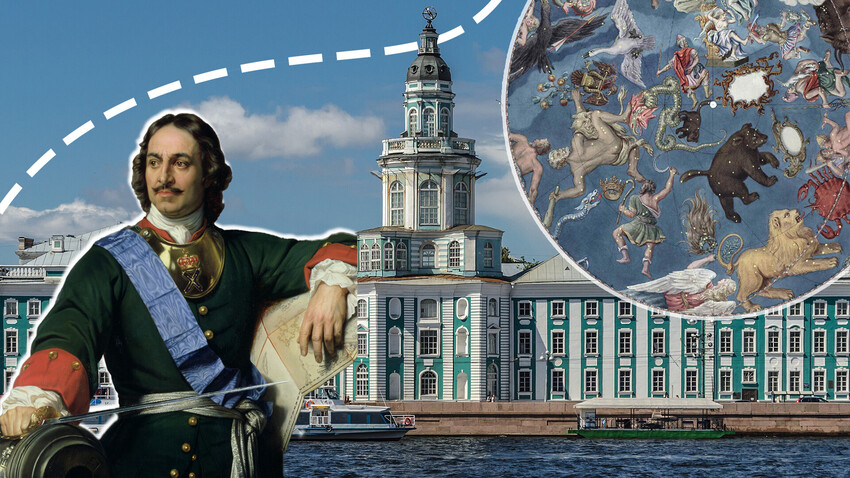
The ideas and “souvenirs” brought back by Russian Tsar Peter the Great from his first foreign trip to Europe were enough to fill Russia’s first museum.
A dwarf from Irkutsk Region by the name of Foma Ignatiev, who was just 126 cm in height and had deformed fingers that resembled crayfish claws, combined working at the Kunstkamera looking after the stoves with his second job as a “live exhibit”. The founder of the Kunstkamera, Emperor Peter the Great, enjoyed shaking Foma’s hand whenever he met him. Foma was in service for 16 years and, after his death, the tsar ordered a lifelike model to be made, covered with Ignatiev’s skin and put on display in the Kunstkamera.
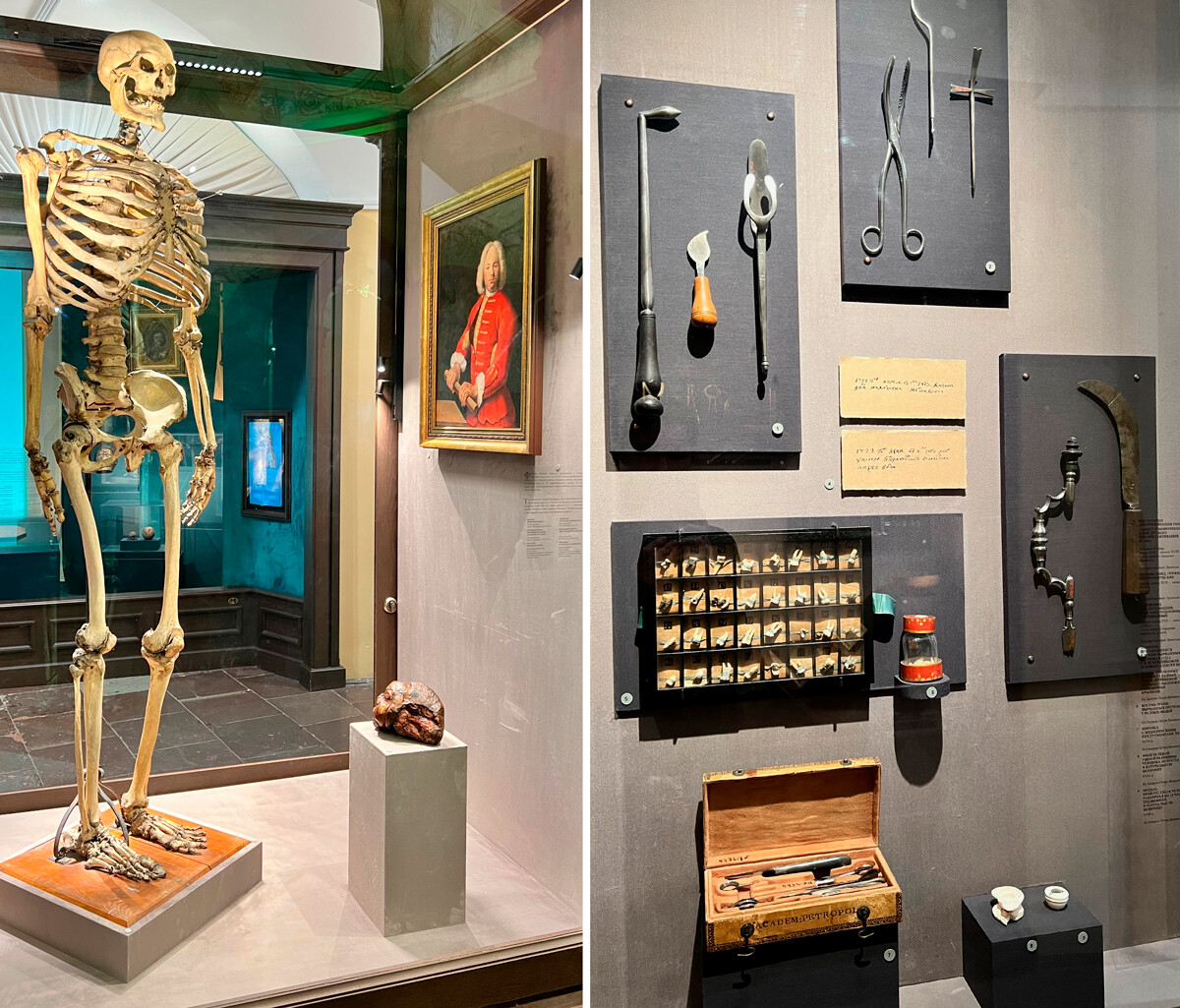
The Frenchman Nicolas Bourgeois was 226 cm tall. The tsar employed him as a footman and married him off to a Finn “to breed strapping offspring”. After the servant’s death in 1724, the tsar ordered his body to be dissected, the skeleton put on display and his organs to be preserved in alcohol. He also had a lifelike model made and put to the same use as for Foma Ignatiev.
The Kunstkamera, Russia’s first universal museum, was supposed to educate visitors and challenge their ignorance, according to Peter the Great’s plan. He believed that not only books and curiosities, but also these kinds of live exhibits and posthumous effigies were suitable for this purpose.
The Grand Embassy of Peter I - the Russian tsar’s first voyage abroad - was not just a diplomatic mission but also a scientific expedition. During his 1697-1698 visits to Livonia and Courland, as well as Prussia, Saxony, Holland, England and Austria, Peter the Great examined privately-held anatomical, botanical and zoological collections, as well as libraries, collections of antiquities and oriental artifacts and natural science displays.
He met scientists, negotiated with them about buying their collections and invited them to enter into the service of Russia. It was during his travels that the tsar, for the first time, contemplated creating his own cabinet of curiosities - the ‘Kunstkamera’.
Initially, all of Peter’s European acquisitions were handed over to the Aptekarsky Prikaz (‘Apothecary Department of the imperial administration’) based in Moscow. But, in 1714, with the development of St. Petersburg, which had been founded as the new capital in 1703, the tsar ordered that all his private collections and library, as well as the holdings of the Aptekarsky Prikaz, should be moved there. At first, the rarities were placed in the monarch’s residence in the Summer Palace. In 1718, as the cabinet of curiosities grew, it was moved to the Kikin Chambers, a palace confiscated from Peter I’s former associate Alexander Kikin, who had been arrested in connection with an alleged plot involving the tsar’s son Alexei.
For educational purposes, the collections were open to everyone who wanted to see them. Contrary to the suggestions of his courtiers, the tsar refused to charge visitors to the Imperial Library and the ‘Kunst- und Naturkammer’ (as the ‘Kunstkamera’ was called): He wanted to arouse their interest in science and generate a thirst for knowledge.
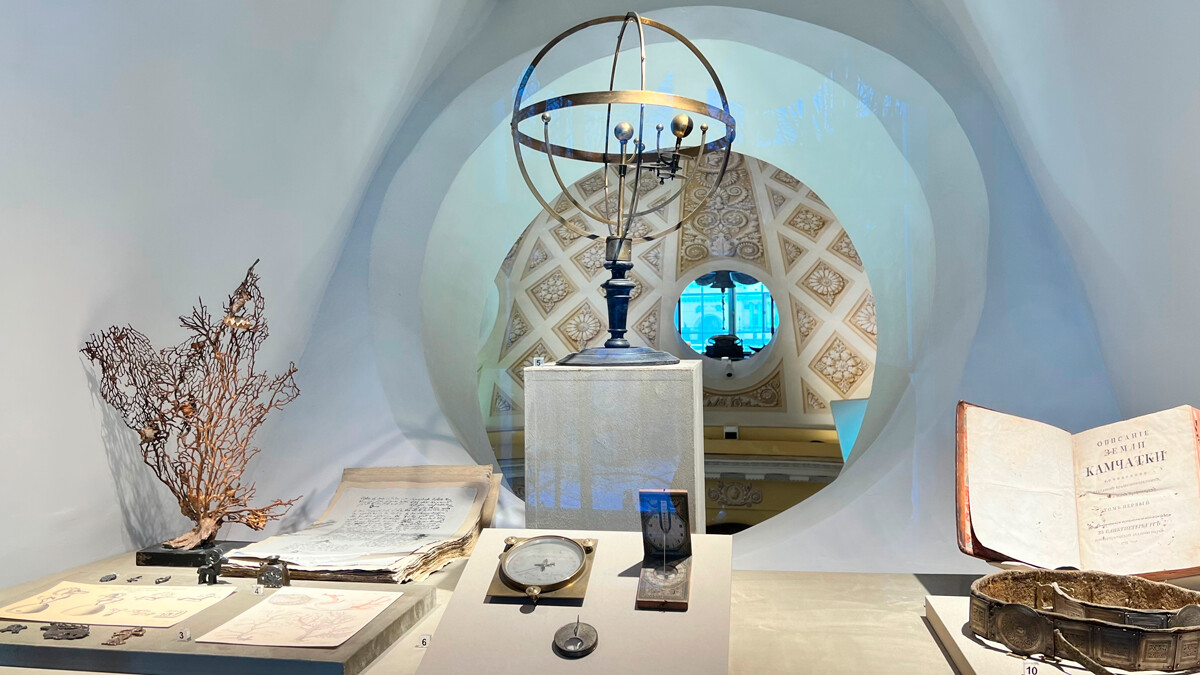
“Who would have cared about my natural curiosities or wanted to see them if they had to pay money for it? I also declare that anyone who comes here should not only be allowed in free of charge but also that, if they come in company to look at the rarities, they should be offered, at my expense, a cup of coffee, a glass of wine or vodka, or something else, in these very rooms,” is how the administrative secretary of the Academy of Sciences, Jacob von Stählin, recounted the tsar’s words in his book ‘Genuine anecdotes about Peter the Great’ (1785).
The uniqueness of the collection impressed not just the Russian public, but also foreigners who were able to appreciate the rarities.
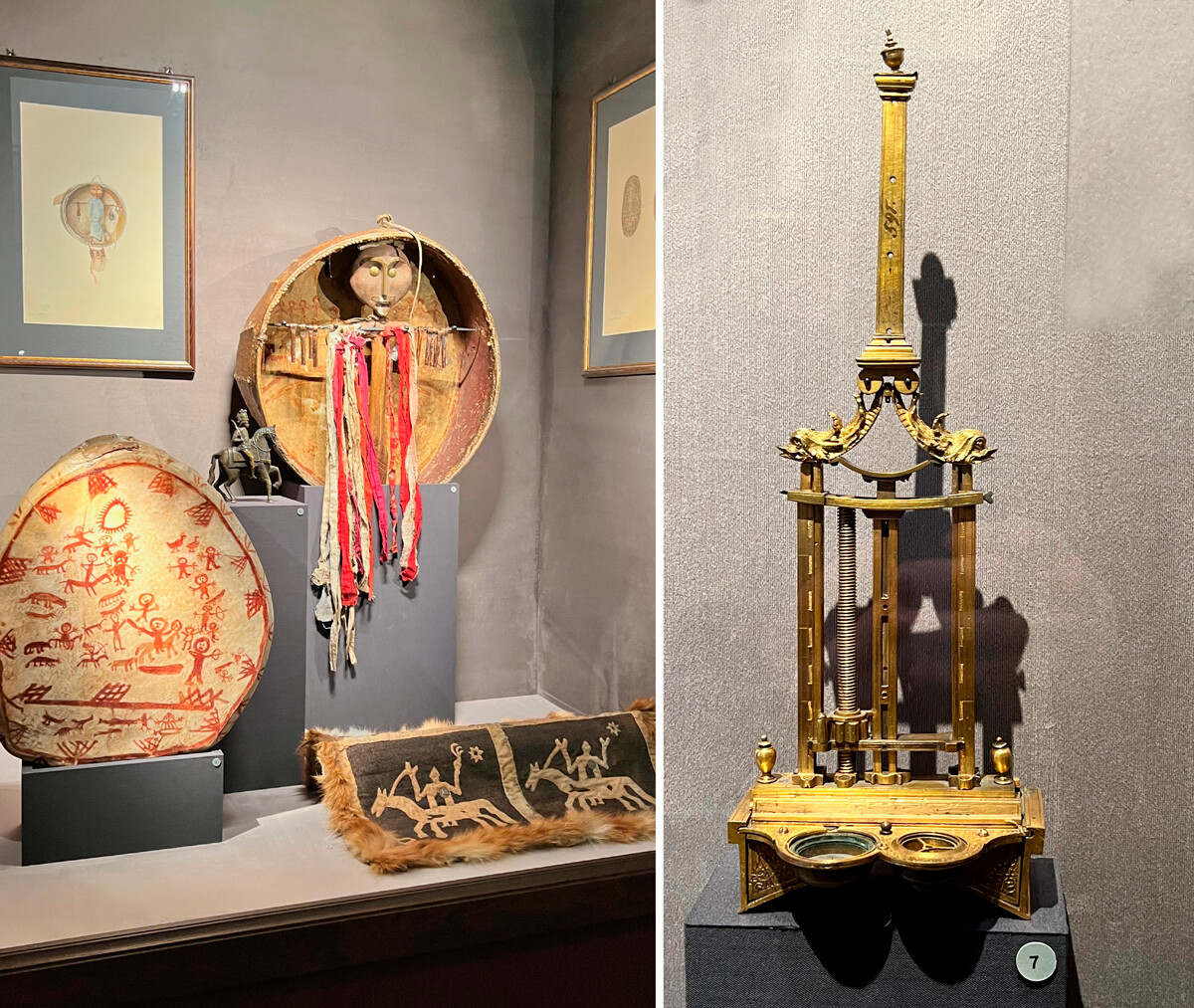
Friedrich Christian Weber, a Hanoverian who represented the British Court at the Russian Court in St. Petersburg in the 1720s, wrote: “If they continue to augment the precious library in Petersburg, it may, in a few years, be reckoned as one of the best in Europe, if not for the Number of Books, yet at least on account of their value. The tsar has a Collection of Pictures that is inestimable. Only the presents which he and his predecessors received from all parts of Asia and which are now in Petersburg, would make a complete Cabinet of Curiosities. […] There are, likewise, so many Chemical and other Natural Curiosities, monstrous Productions, Mathematical Instruments, the famous Globe of Gottorf representing the Copernican System and abundance of other Rarities in St. Petersburg; (the Care of all which was committed to M. Areskin, the tzar’s first Physician [Robert Erskine]), that it is to be wondered how such a Collection could be made in so few Years.”
On January 28 (Feb. 8) 1724, Peter I signed a decree establishing the Academy of Sciences. Peter’s Kunstkamera and Library became the scientific and material nucleus of the Academy.
Following Peter I’s death, from 1726 onwards, objects began to be transferred to a new building that had been under construction on Vasilyevsky Island since 1718, specially for the chamber of rarities and the library. They are still kept there to this day.
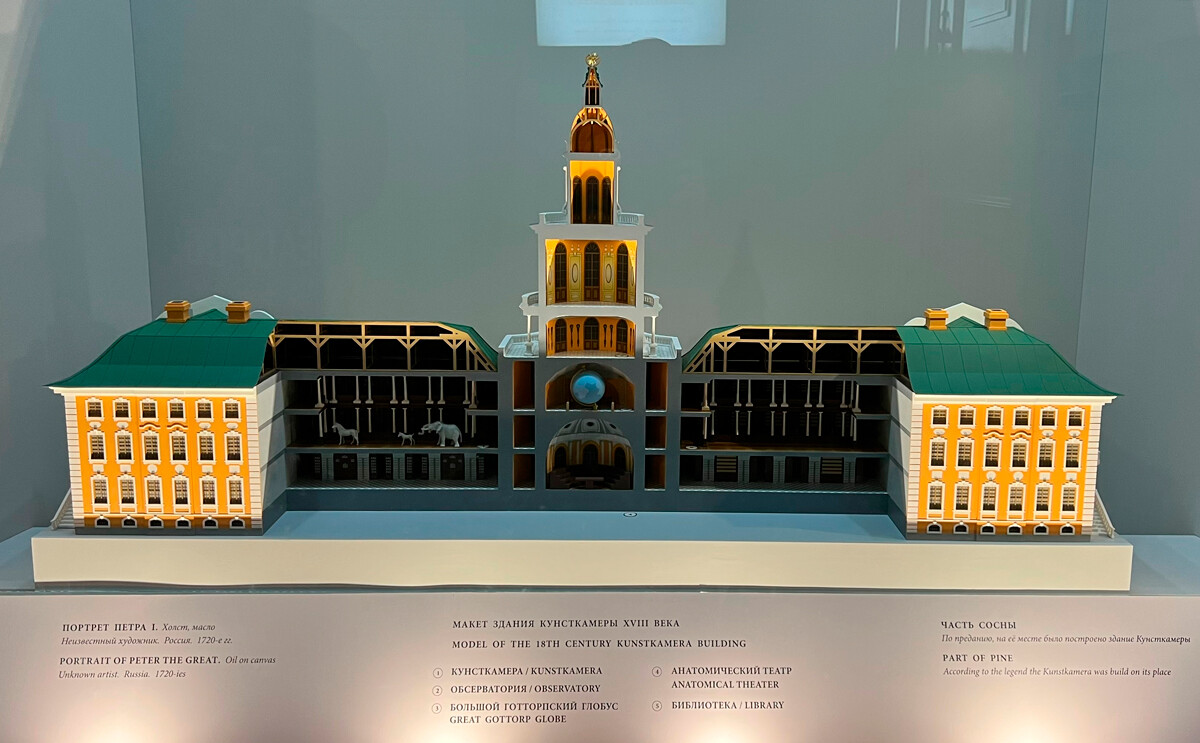
The collections of Peter’s Kunstkamera can be divided into six sections - ‘Anatomy’, ‘Naturalia’, ‘Rarities’, ‘Instruments’, ‘Artificialia and Curiosities’ and ‘Minerals and Paleontology’.
In 1714, the anatomical collection consisted of a mere “several hundred glass jars of preserved fish, birds and reptiles” which Peter had purchased in Holland in 1698, as well as “several freaks and anatomical things”.
In 1716, these were joined by a “collection of quadrupedal animals, birds, fish, snakes, lizards, shells and other curious works of nature from the East and West Indies” that had been put together by the Dutch apothecary Albertus Seba, and, in 1717, the holdings were further enlarged when the celebrated anatomical collection of the Dutch anatomist Frederik Ruysch was acquired. The internal perimeter of the room was lined with display cabinets of zoological specimens, including human skeletons.

From Frederik Ruysch's collection
KunstkameraPeter was not just interested in anatomy, but also medicine. He learnt how to dissect cadavers, let blood, lance boils, apply bandages, make prostheses and perform dentistry; he frequently carried out operations himself and extracted teeth. The Kunstkamera has a collection of teeth pulled out by the tsar himself.
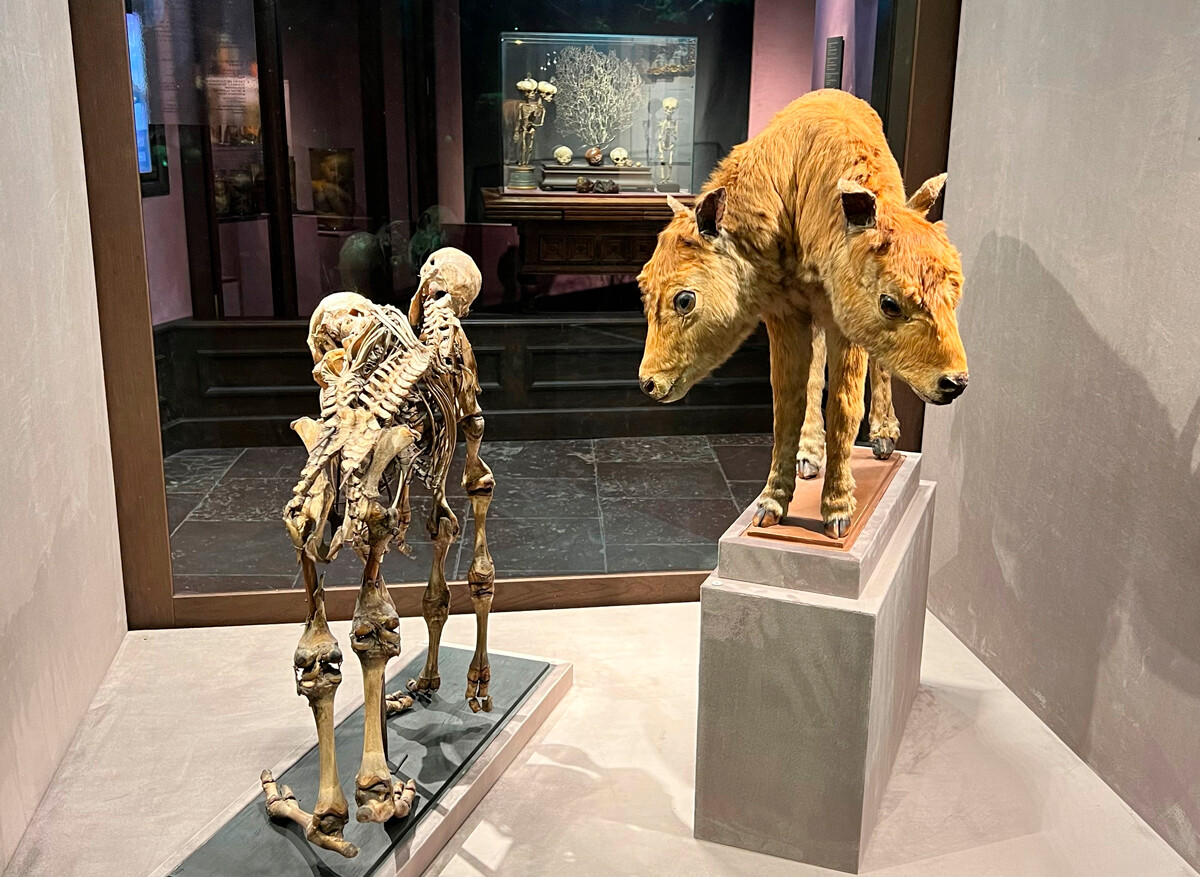
This enthusiasm (in tandem with Peter’s military campaigns) contributed to the development of medicine in Russia: Between 1706 and 1717, military hospitals, surgical schools, botanical gardens and anatomical theaters were opened. From 1728 until 1747 (the year a fire broke out), there was also an anatomical theater in the Kunstkamera building.
This included herbariums, engravings of plants and also stuffed and “wet” ( i.e. preserved in alcohol) specimens of animals from all continents. In the 18th century, Peter I’s collection was regarded as the most magnificent in Europe. The zoological collection consisted of seven sections: quadrupeds, birds, amphibians, fish, crustaceans, molluscs and insects.
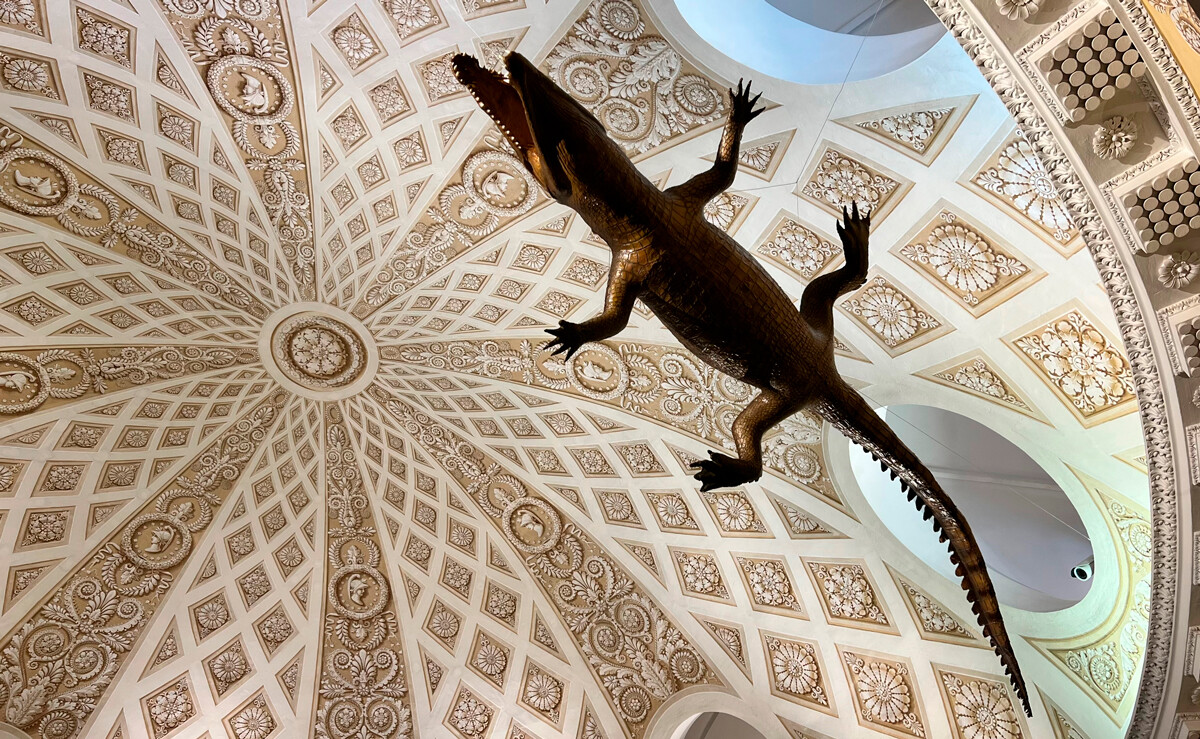
They were complemented by the bones, skeletons, skulls and taxidermy specimens of rare animals and birds. The displays included the skeleton and stuffed effigy of an elephant and a large fish and stuffed crocodile, the latter two suspended from the ceiling.
This section was devoted to archeological and paleontological finds collected in the European part of Russia and Siberia on Peter’s instructions. The first artifacts - everyday items and sacred objects - were brought from Siberian burial mounds and a Golden Horde site near Astrakhan.
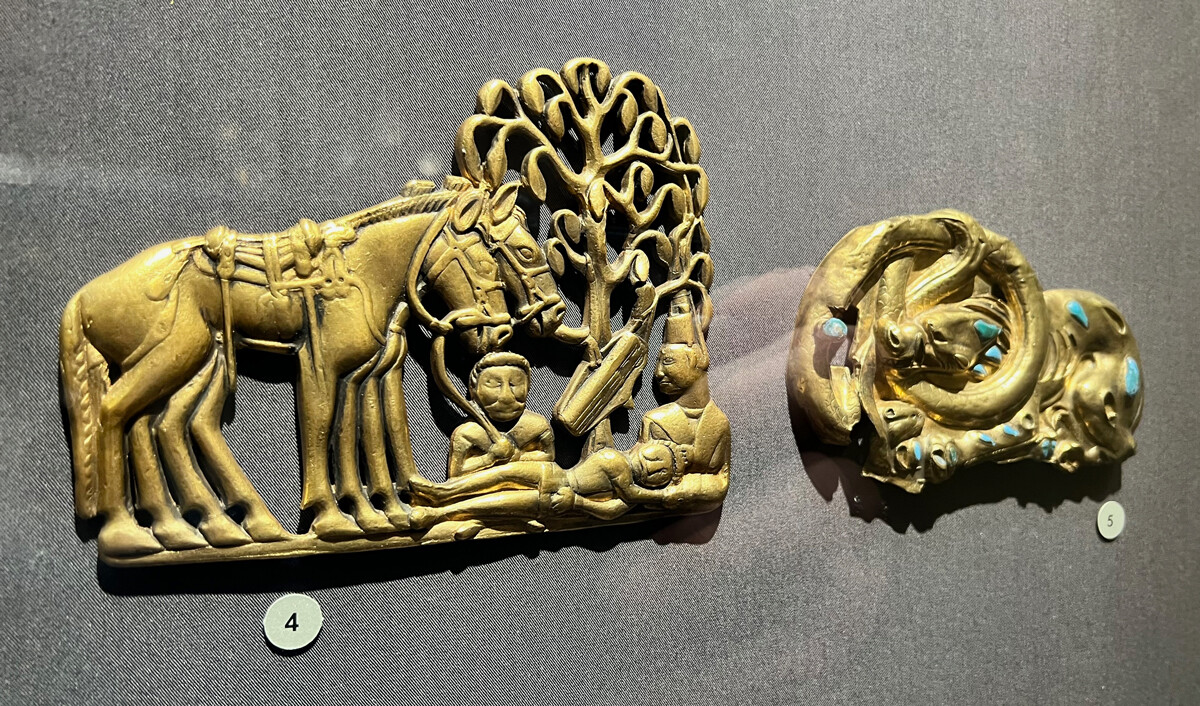
The clothes of Siberian indigenous peoples and shamanic objects were brought back from other expeditions.
Peter the Great collected practically everything: rare foreign objects of gold, silver and precious stone, antique artifacts, numismatic collections, military trophies (including the keys of various cities), gifts from European monarchs, ceremonial weapons, paintings and artistic and technical drawings, etc.
He particularly prized rare Chinese objects brought to him from Russian diplomatic missions to China or bought from Western European collectors.
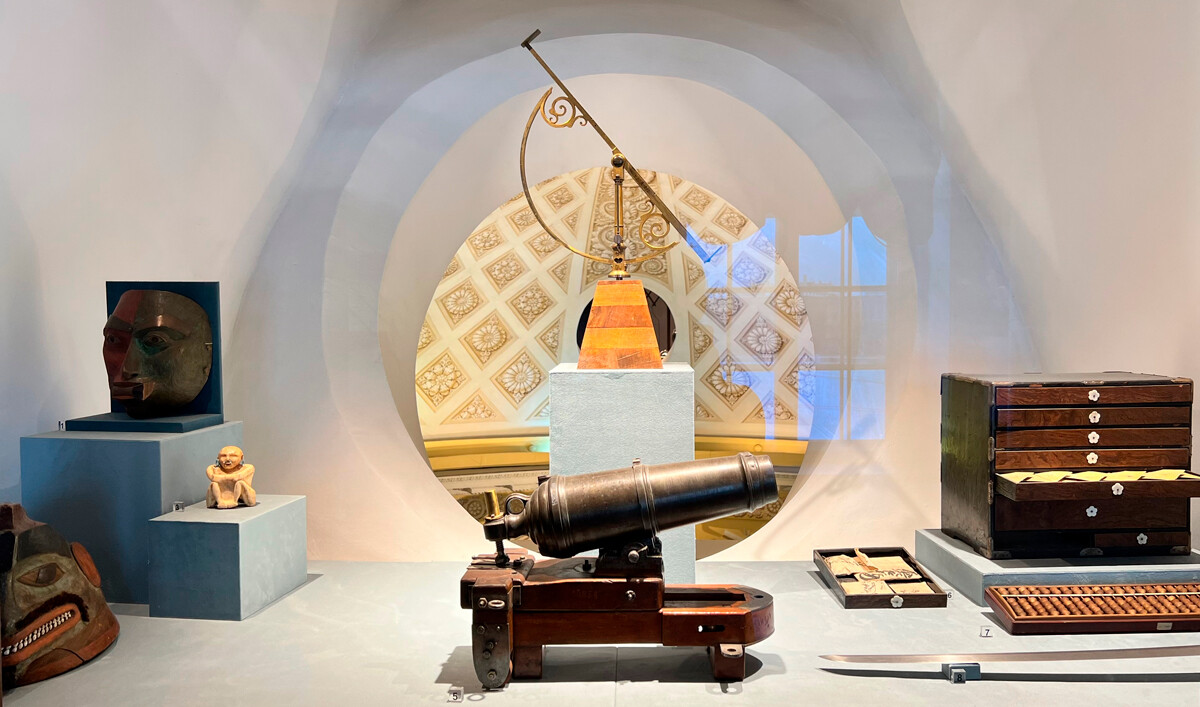
Precious objects belonging to one of the Tsar's right-hand men, Field Marshal Yakov Bryus (Jacob Bruce), entered the Kunstkamera in 1736. His collection included objects of carved and engraved stone, bronze, bone and rhinoceros horn, as well as porcelain, ceramics and mechanical automata.
The Chinese collection was partly damaged in the fire at the Kunstkamera in December 1747, but it was replenished following an Academy of Sciences-sponsored expedition to China by Frants-Luka Yelachich (Franjo Luka Jelačić), a physician of Croatian background.
Peter’s Kunstkamera displayed both minerals of Russian origin (alum, sulfur and pitch, iron, copper and gold ores) and rare minerals from abroad.
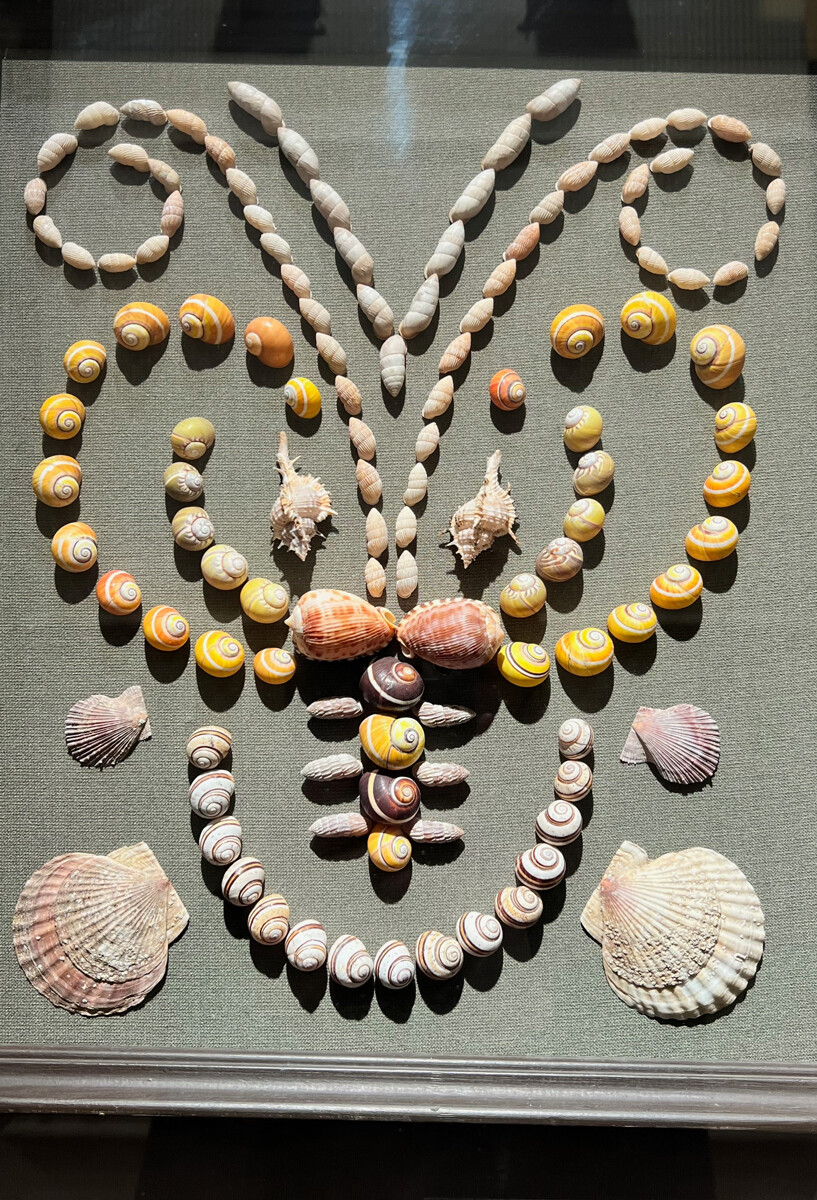
Fossils, shells and the bones of prehistoric animals - mammoth, bison and wooly rhinoceros - were exhibited next to them.
Peter I collected, ordered and bought scientific devices and inventions throughout his life.
In 1721, he acquired physical and mathematical instruments from the Leiden physicist Pieter van Musschenbroek, who subsequently became a supplier to the Academy of Sciences. Under the auspices of the academy, the ‘Instrument Chambers’ were set up to supply equipment to workshops and laboratories.
Among the exhibits in the Kunstkamera is a planispheric astrolabe (an instrument for measuring the longitude and latitude of celestial spheres and the length of day and night) by renowned Dutch master instrument maker Gualterus Arsenius (17th century). The attribution to Gualterus is confirmed in the Kunstkamera online catalog, a meridian circle by T. Ertel (1828), armillary spheres (which represent a model of the solar system), telescopes, artillery aiming devices from the time of the Seven Years’ War (1756-1763), the principal lens of a burning-glass device by E.W. von Tschirnhaus (1699) and a multitude of optical, mechanical, physical, geometric and mathematical instruments.
From the 18th century, the tower of the Kunstkamera was used for astronomical observations. The Petersburg Meridian, which became the basis for the cartographic mapping of the country and the planning of the city, passed through it. The tower of the Kunstkamera building has been surmounted by an armillary sphere - a symbol of the study of the heavens - since 1730 (the present one is the third to occupy this position).
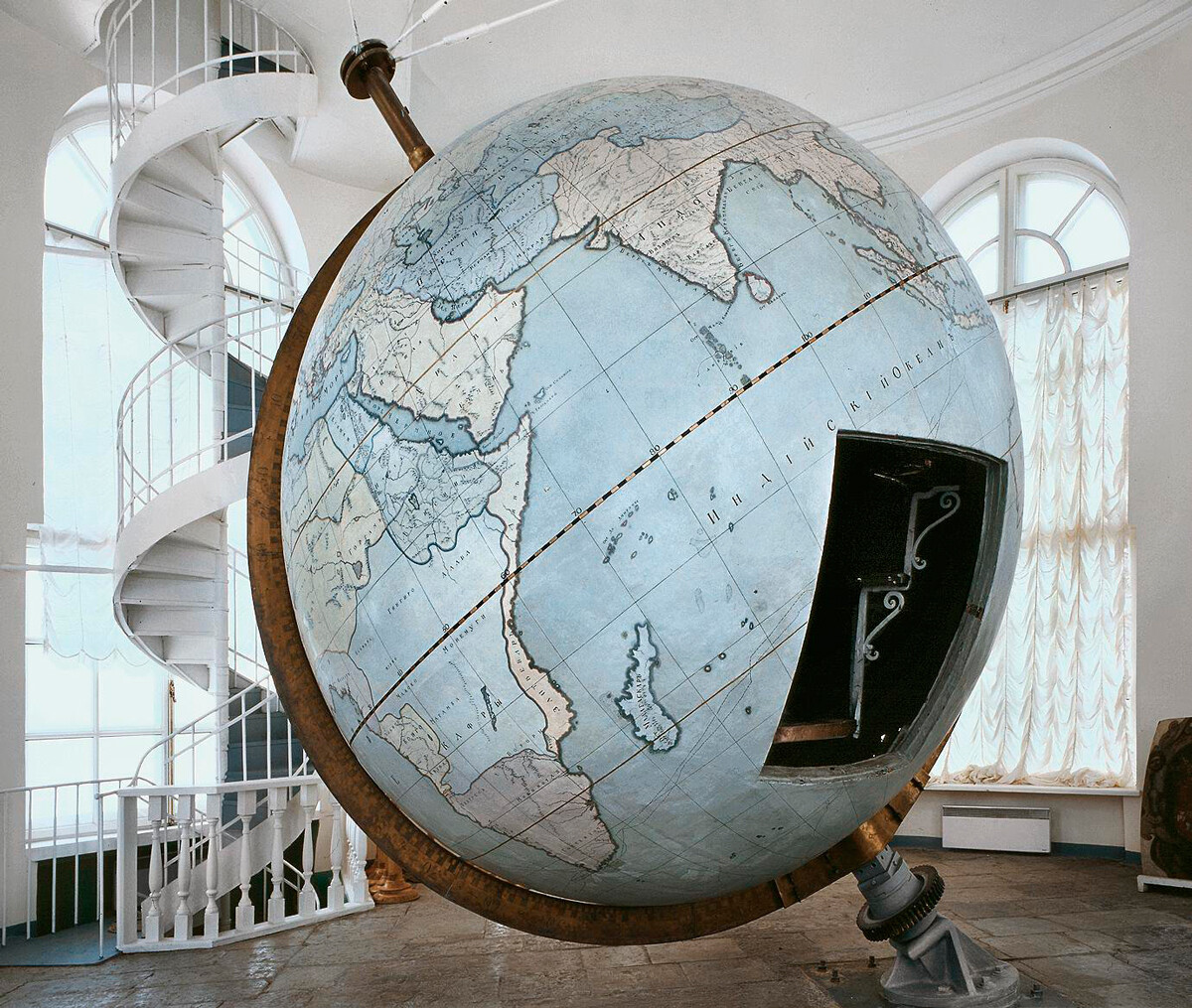
The Great Globe of Gottorf
KunstkameraOne of the first exhibits was the Great Globe of Gottorf, made in Holstein (a historical region of Germany) in 1650-1664. Measuring 3.11 meters in diameter, the device depicted the whole of the heavens: Its interior showed the galaxy with its constellations, while on the outside was a map of the known surface of the earth. The globe was rotated by a water wheel and, in the course of 24 hours, it could turn full circle on its axis, imitating the rotation of our planet: In other words, it also served as a clock. Peter “cadged” the globe from the young Duke Charles Frederick in 1713. The latter would later become the husband of Peter’s daughter Anna and the father of Emperor Peter III. The original Globe of Gottorf was almost totally destroyed in a big fire in Kunstkamera in 1747. Its copy - the Big Academic globe - was constructed in 1748-1752 and it is exhibited in the museum today.
It took four years for the instrument to make the journey: first by sea to Reval (Tallinn) and then dragged overland. The globe arrived in St. Petersburg in 1717 on two sledges pulled by 800 peasants escorted by 300 dragoons (cavalrymen) who hacked their way through forests and prepared the ground for it to pass. It was initially installed on the Field of Mars near the Summer Palace, but in 1726 it was brought to the third level of the Kunstkamera tower and only after that were the overhead floors and upper stories completed.
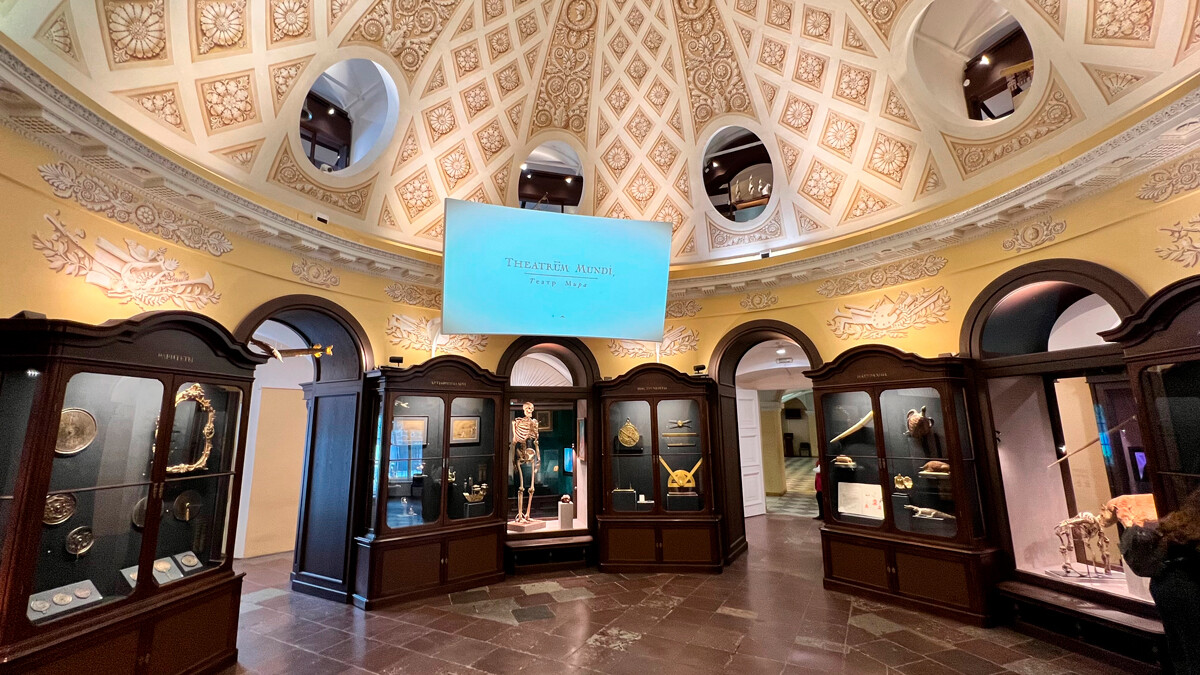
Many of the earliest exhibits in the collection are on display at the permanent exhibition ‘Peter’s Kunstkamera or the Tower of Knowledge’, which opened in 2022 to mark the 350th anniversary of the birth of the Kunstkamera’s founder.
If using any of Russia Beyond's content, partly or in full, always provide an active hyperlink to the original material.
Subscribe
to our newsletter!
Get the week's best stories straight to your inbox